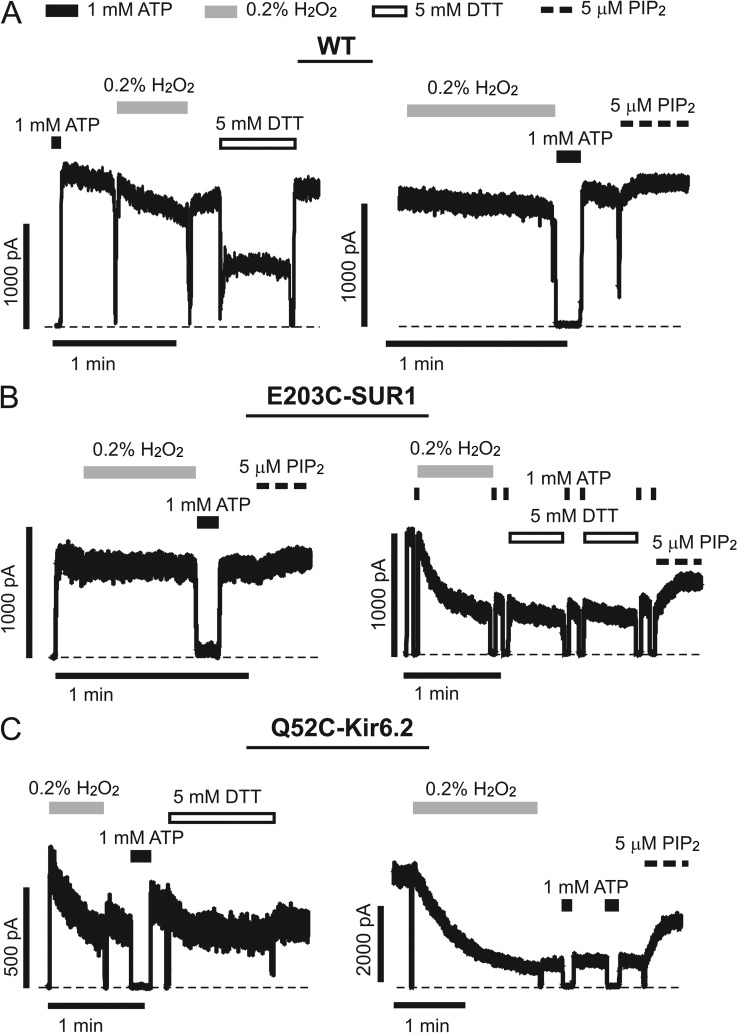Figure 5.
Cross-linking does not occur in WT, WT-Kir6.2//E203C-SUR1, or Q52C-Kir6.2//WT-SUR1 channels. (A–C) Representative traces of inside-out patch voltage-clamp recordings from COSm6 cell transfected with control WT (A), WT-Kir6.2//E203C-SUR1 (B), or Q52C-Kir6.2//WT-SUR1 (C) channels. Patches were exposed to oxidizing agent (0.2% H2O2, gray lines), 1 mM ATP (black lines), reducing agent (5 mM DTT, open lines), or 5 µM PIP2 (thick dashed lines). Thin dashed lines represent zero current. Two examples of each condition are shown. Occasional decreases in current were observed with H2O2 exposure, but always slower and less robust than compared with Q52C-Kir6.2//E203C-SUR1 channels (Fig. 4). Furthermore, control channels remain sensitive to PIP2 stimulation after H2O2 exposure, and in no case did DTT result in increased currents. Brief downward deflections seen in some of the traces are caused by solution exchange artifacts.

